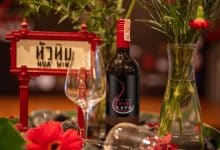Thai and Chinese fusion cuisine: A blend of two cultures
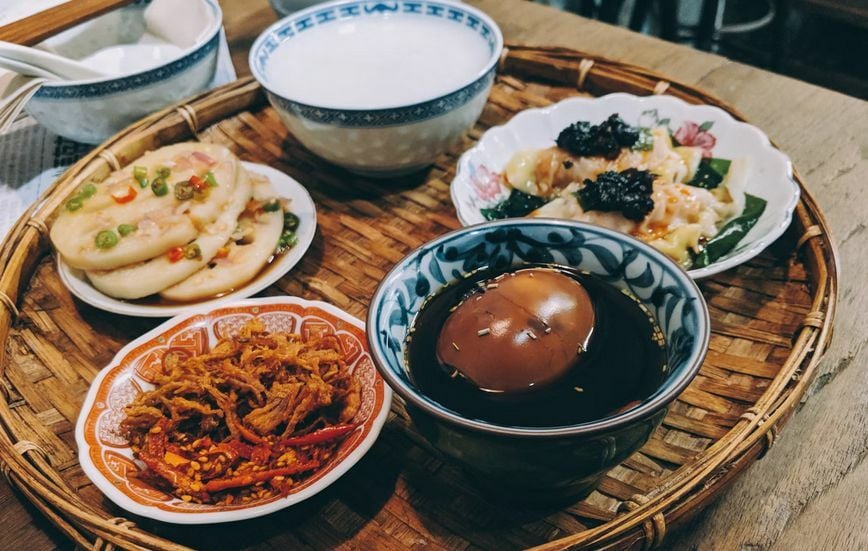
The world of Thai and Chinese fusion food offers a delightful blend of flavours from both rich culinary traditions. Originating as humble street food, these fusion dishes have evolved into restaurant staples. Consider guay jub, a Thai-Chinese staple featuring rolled rice noodles, crispy pork offal, and fresh herbs. The dish balances peppery notes with a hearty broth.
Another fusion creation is the Thai-inspired macaron. Chef Ian Kittichai’s Issaya Cooking Studio infuses classic French treats with playful Thai twists. Flavours range from smoky kao mao to tamarind-prik pao chocolate, attracting dessert lovers with unique tastes.
Thai food
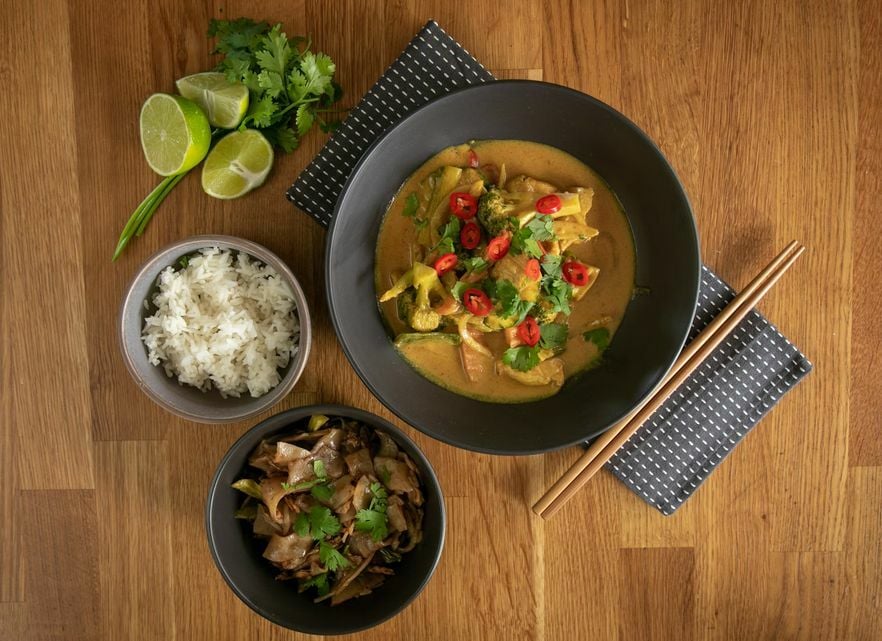
Thai food is celebrated globally for its complex mix of flavours. Combining sour, sweet, oily, salty, and spicy tastes, Thai cuisine offers a sensory experience that delights many. The diversity in Thai dishes is immense, featuring ingredients like fresh herbs, spices, and seafood, all meticulously balanced to create unforgettable meals.
Traditional dishes like Pad Thai and Tom Yum Soup have gained international acclaim. Pad Thai is a stir-fried noodle dish featuring shrimp, tofu, peanuts, bean sprouts, and lime. Tom Yum Soup is a hot and sour soup infused with lemongrass, kaffir lime leaves, and galangal, along with shrimp or chicken.
New generations of Thai chefs are now innovating traditional recipes. Thai fusion food arises from this movement, where classic Thai dishes receive contemporary makeovers. This approach results in new dishes that look and taste fresh while retaining their Thai roots.
The rich tradition and continuous innovation in Thai cuisine make it an ever-evolving culinary art. Whether through traditional recipes or exciting fusion variations, Thai food remains a favourite among food lovers worldwide.
Chinese food
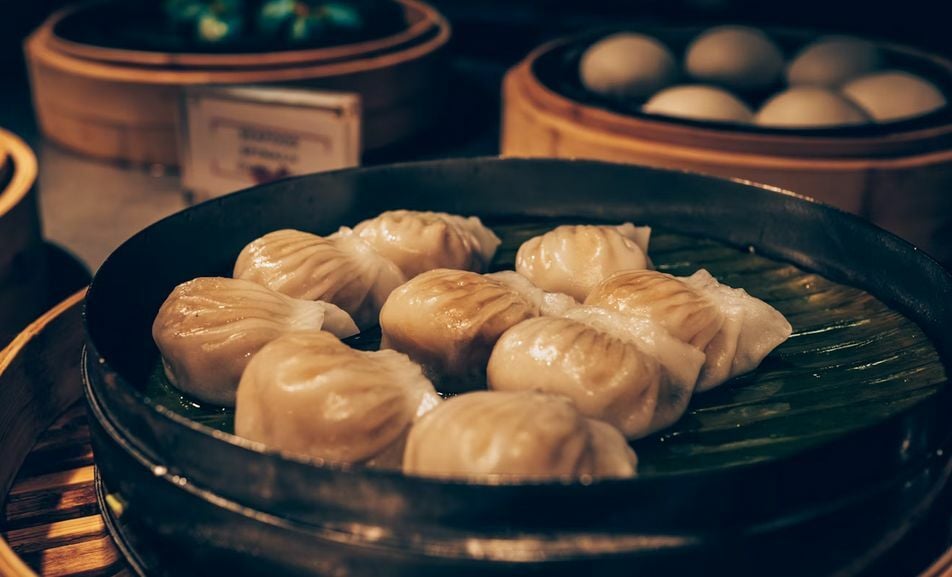
Chinese food is one of the most popular and varied cuisines in the world. It encompasses a wide range of flavours, ingredients and techniques. In Bangkok, establishments like Feng Zhu celebrate Chinese cuisine by offering unique fusion dishes. This eatery, located near Siphraya Pier, stands out for its distinctive Chinese gyoza varieties.
Fusion dishes at Feng Zhu include options like Mala gyoza topped with mozzarella cheese. This inventive combination marries the numbing heat of mala with the creamy texture of cheese. Visitors can choose from five gyoza varieties, each with an option of four different toppings.
The ambience at Feng Zhu enhances the dining experience. Decor elements such as Chinese-language newspapers on the walls and traditional furnishings create a slice of China in Thailand. Unlike typical Chinese street food stalls, Feng Zhu offers a refined setting next to The Sheraton Riverside Hotel.
Chinese food, particularly in fusion contexts, showcases the creativity of chefs like Jurairat Prompayakul. Her vision for Feng Zhu integrates traditional Chinese elements with innovative twists. This fusion approach enhances the culinary landscape of Bangkok, providing a fresh take on classic dishes.
Chinese cuisine continues to evolve through fusion initiatives. By blending traditional recipes with modern ingredients, venues like Feng Zhu engage a diverse audience. The result is a dynamic and evolving culinary scene that respects heritage while embracing new trends.
Thai and chinese food
Thai and Chinese food have unique characteristics making each cuisine distinct yet complementary. Thai cuisine often features bold flavours from tamarind, palm sugar, and fish sauce. Chinese dishes highlight soy sauce, ginger, and garlic. The combination of these ingredients in Thai and Chinese fusion food creates distinctive dishes, beloved by many.
Evolution of Thai and chinese fusion cuisine
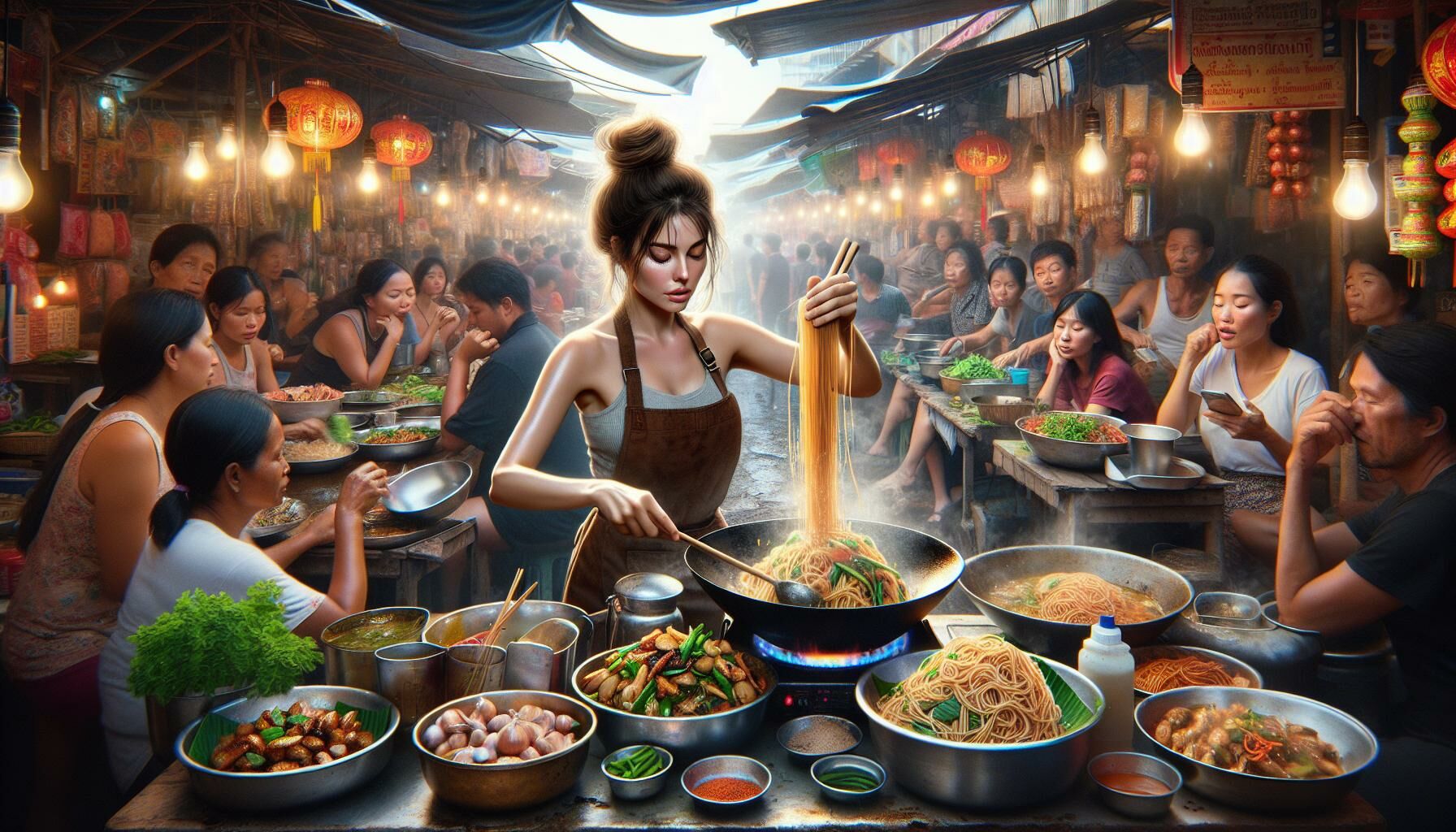
The history of Thai and Chinese fusion cooking
Thai and Chinese fusion cuisine has deep roots in Southeast Asia. The culinary crossovers began centuries ago when Chinese immigrants arrived in Thailand. They brought their cooking techniques and ingredients, which eventually merged with local Thai flavours. Traders and migrants played a key role in this, creating dishes that drew from both traditions. The blending of Thai spices with Chinese cooking methods led to a unique gastronomic landscape.
How these two diverse culinary cultures have come together
Thai and Chinese fusion food showcases complementary aspects of both cuisines. Thai cuisine is known for its bold and spicy flavours, while Chinese food emphasises balance and technique. Chefs combine elements from each tradition, enhancing dishes with a unique twist. An example is Pad Kee Mao, a blend of Chinese stir-fry with Thai spices. Restaurants also innovate by incorporating traditional aristocratic Thai recipes with Chinese elements, like bao with Thai-style fillings. Street vendors in Thailand serve fusion dishes, making experimental flavours accessible to everyone. This blend respects both culinary traditions while fostering new and exciting dishes.
The fusion food phenomenon
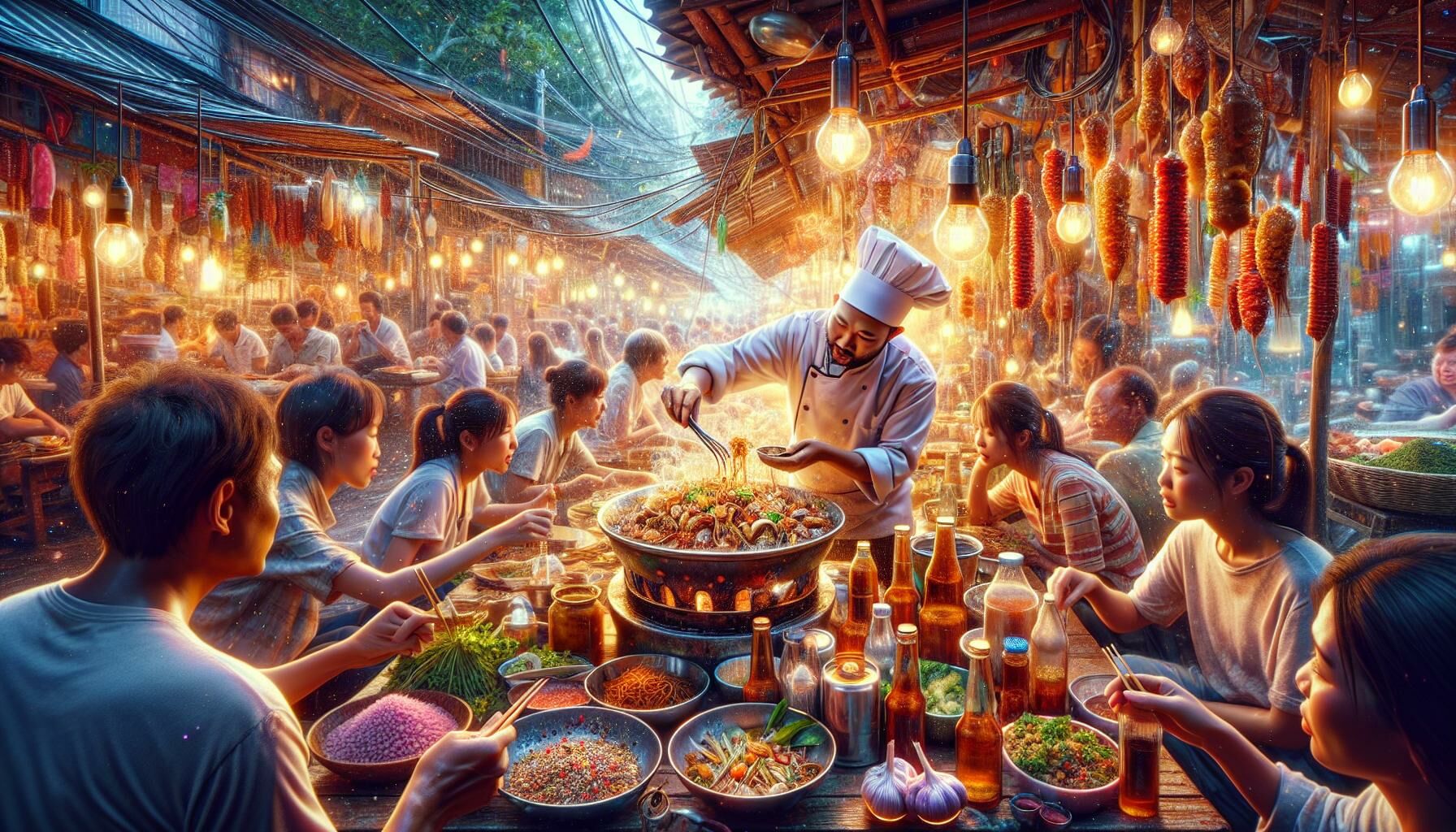
The unique flavours and ingredients of Thai and Chinese fusion food
Thai and Chinese fusion cuisine combines the rich, aromatic spices of Thai food with the balanced, often subtly flavoured ingredients used in Chinese cooking. Examples like smoky kao mao macarons or tamarind-prik pao chocolates illustrate this blend.
By doing this, the cuisine offers delightful experiences, bridging cultural tastes and broadening culinary horizons. These innovative creations demonstrate how Thai and Chinese fusion food continues to be a dynamic force in the culinary world.
How these elements interact in fusion dishes
In fusion dishes, these elements work in harmony to create delicious, unique experiences. High heat and wok techniques essential to Chinese cooking infuse Thai dishes, resulting in rich, charred flavours. Stirring ensures the even distribution of flavours, crucial in fusion food. Delicate plating, often seen in Thai cuisine, finds new expression in Chinese bao filled with Thai-spiced ingredients. Thai and Chinese fusion cuisine showcases this creative interplay, where culinary traditions merge to form novel and appetising dishes.
Popular Thai and Chinese fusion dishes
Pad See Ew with Hoisin Sauce
Pad See Ew fuses Thai stir-fried noodles with the rich, sweet flavours of Chinese hoisin sauce. The dish typically contains broad, flat noodles, gai lan (Chinese broccoli), and egg. Adding hoisin sauce gives it a unique twist, making it a standout fusion dish.
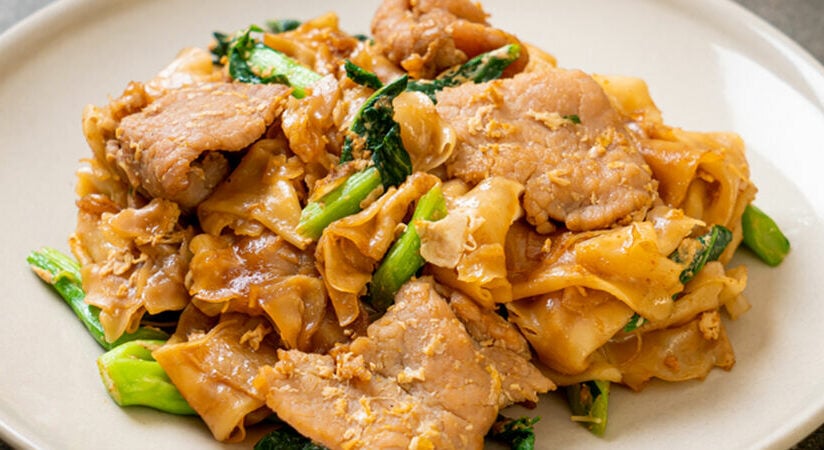
Jok
Jok, also known as Thai congee, incorporates Chinese culinary techniques with Thai flavours. This creamy rice porridge is slow-cooked until smooth. Toppings include pork offal, Chinese doughnuts, and sliced ginger, creating a comforting breakfast option.
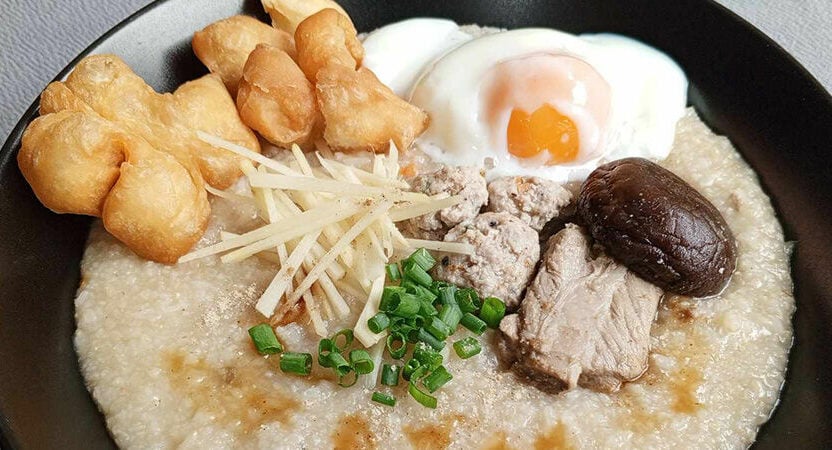
Fishballs
Fishballs feature prominently in both Thai and Chinese kitchens. Fusion varieties blend Thai herbs with Chinese-style fishballs. Often skewered and grilled, they make an ideal snack or street food offering.
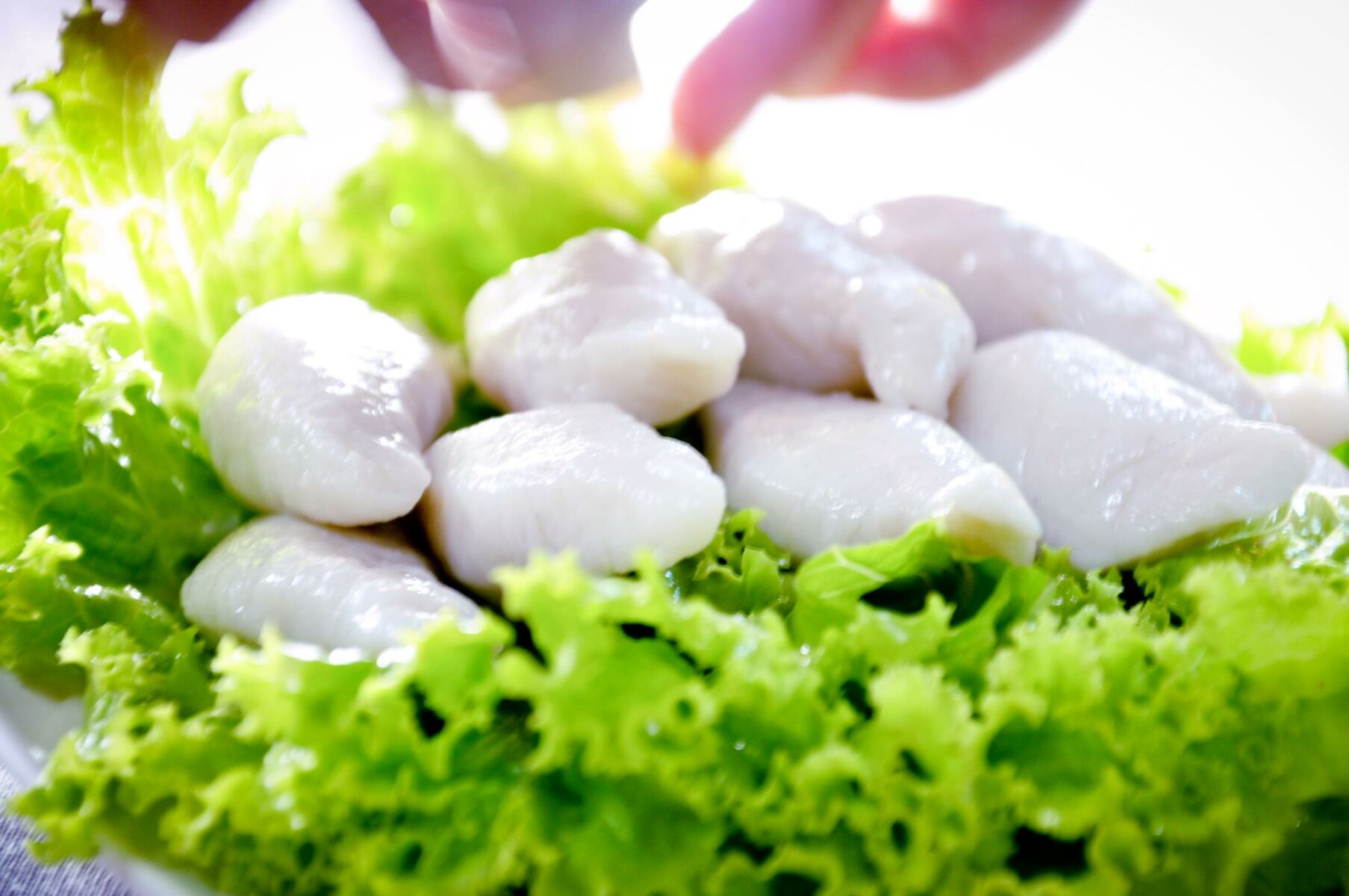
Yentafo
Yentafo combines Thai and Chinese flavours in a noodle soup. The distinctive pink broth comes from fermented tofu and features rice noodles, fish balls, and morning glory. The mix of sweet and sour flavours exemplifies Thai and Chinese fusion cuisine.
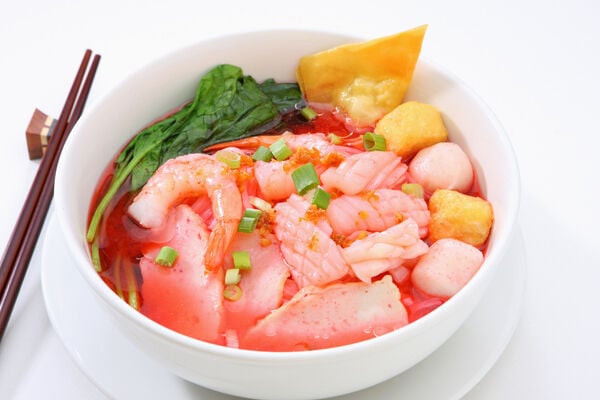
Guay Jub
Guay Jub offers a harmonious blend of Thai and Chinese elements in a noodle soup. This dish features rolled rice noodles in a peppery broth, often containing pork offal and hard-boiled eggs. The mix of spices and textures highlights fusion cuisine.
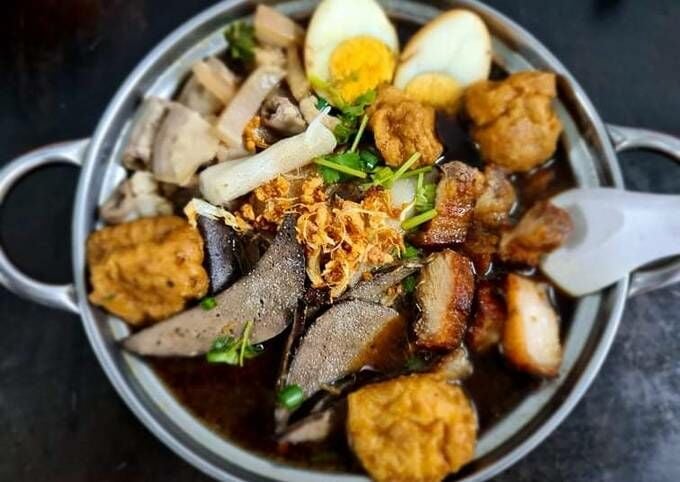
Khao Moo Daeng
Khao Moo Daeng, or Thai red pork with rice, gets an upgrade with Chinese flavours. The red barbecue pork is a nod to Chinese char siu, while the Thai-style rice and sauce add a local twist.
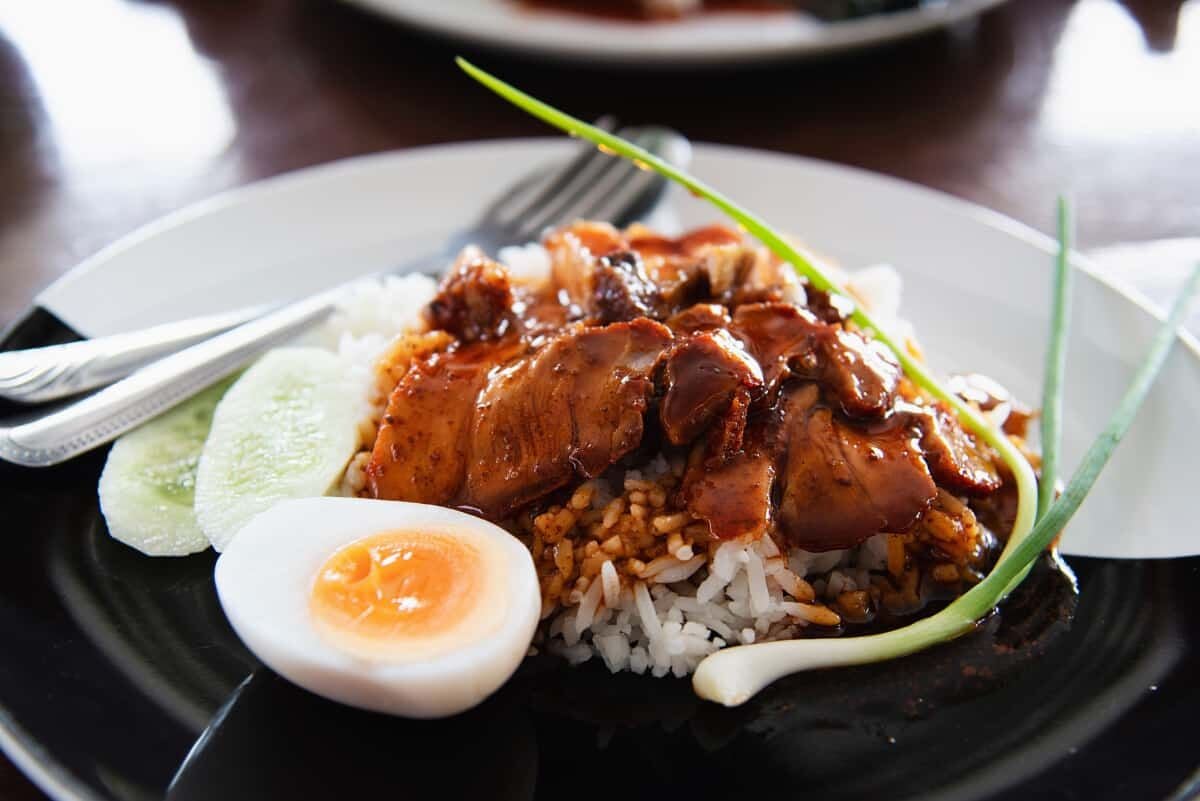
Thai and Chinese fusion food represents an exciting culinary frontier where tradition meets innovation. The harmonious blend of Chinese techniques with Thai flavours offers a tantalising experience for food lovers.
Latest Thailand News
Follow The Thaiger on Google News:

